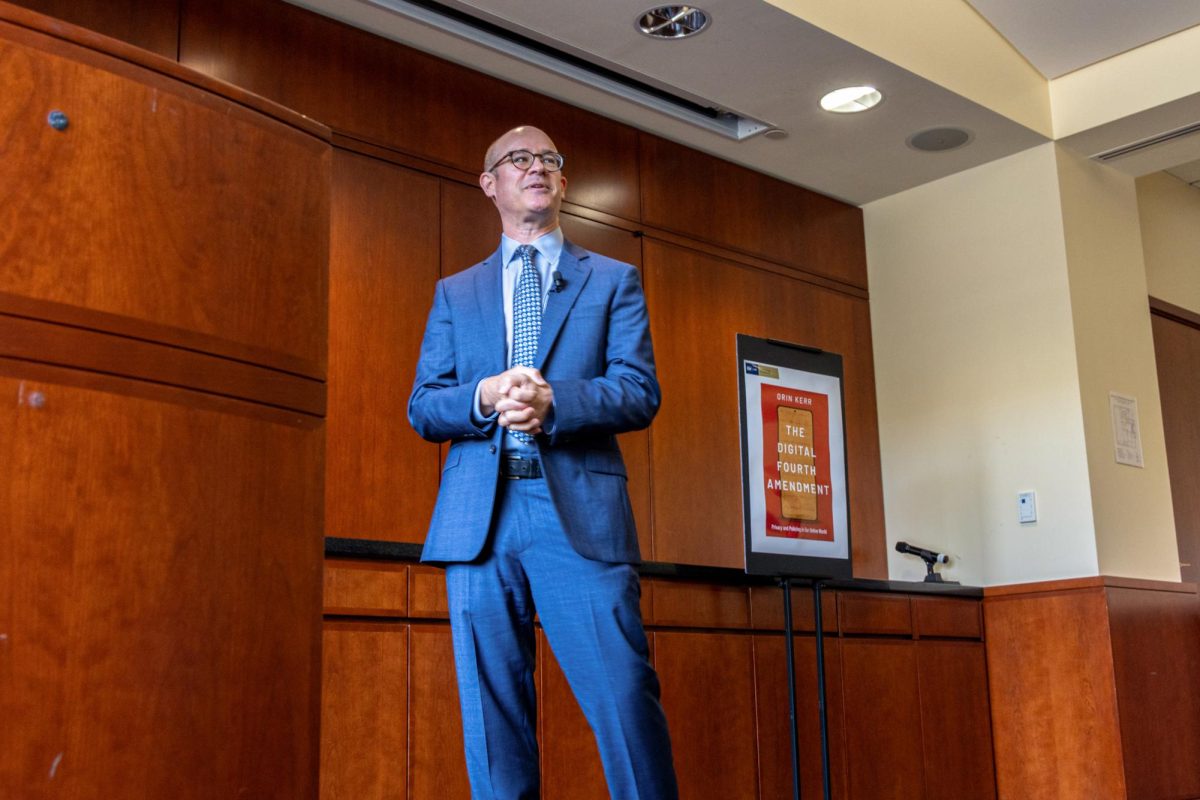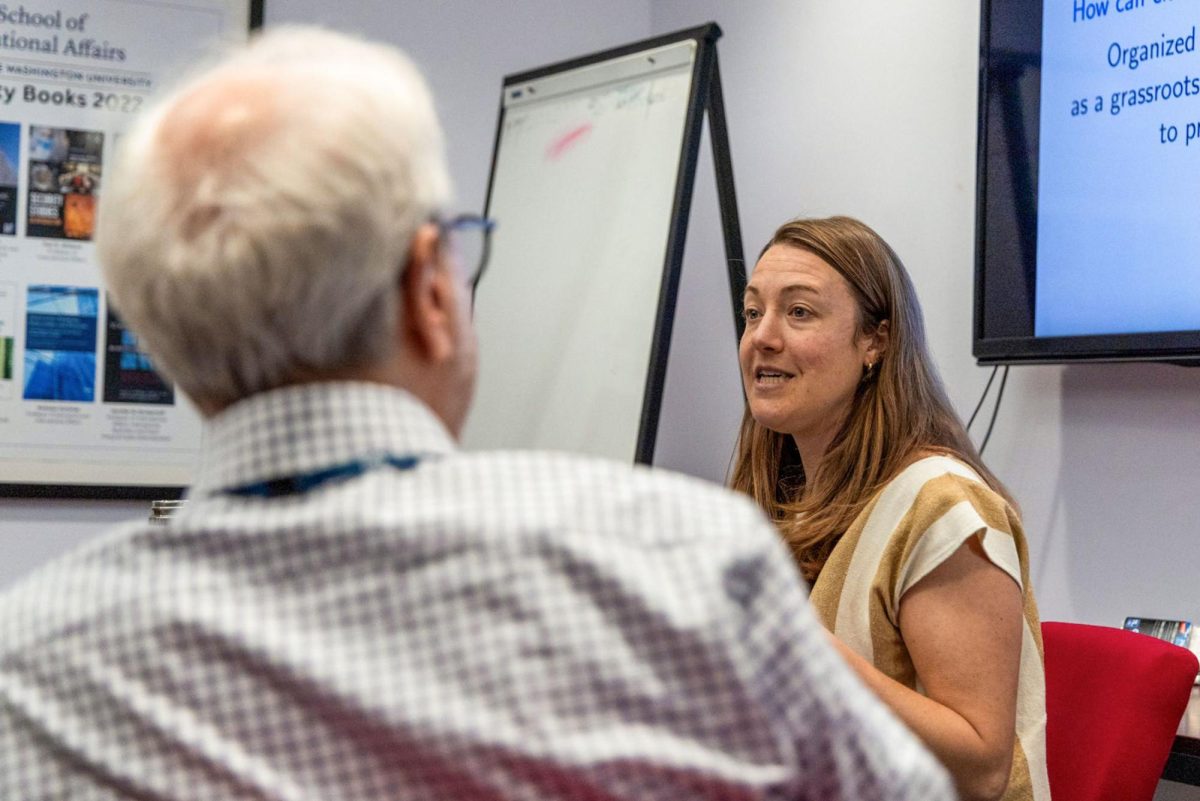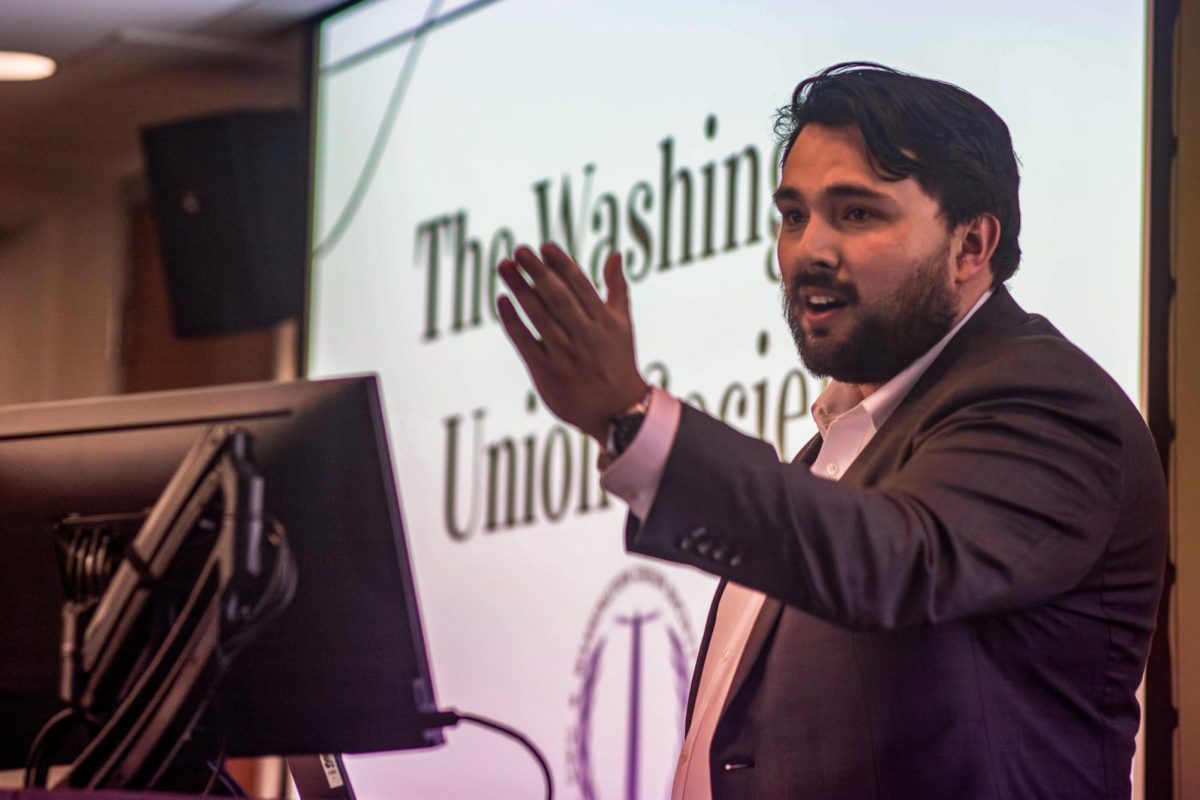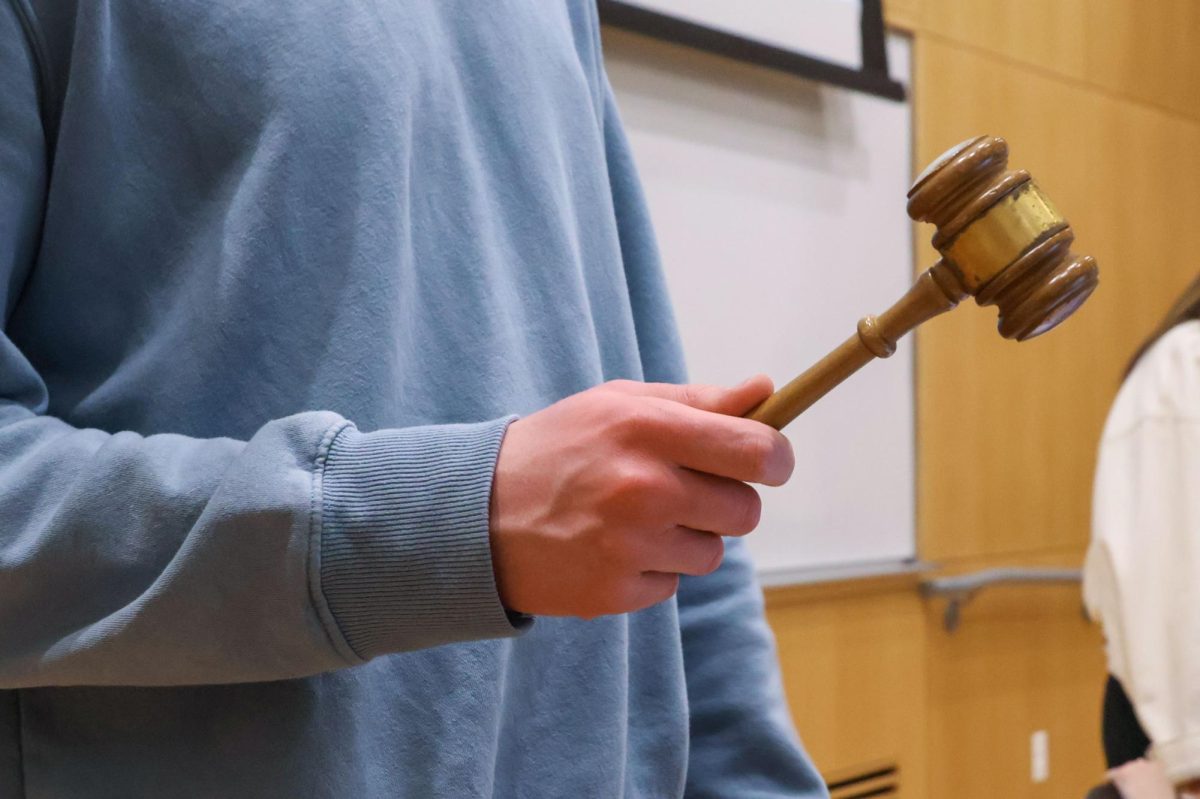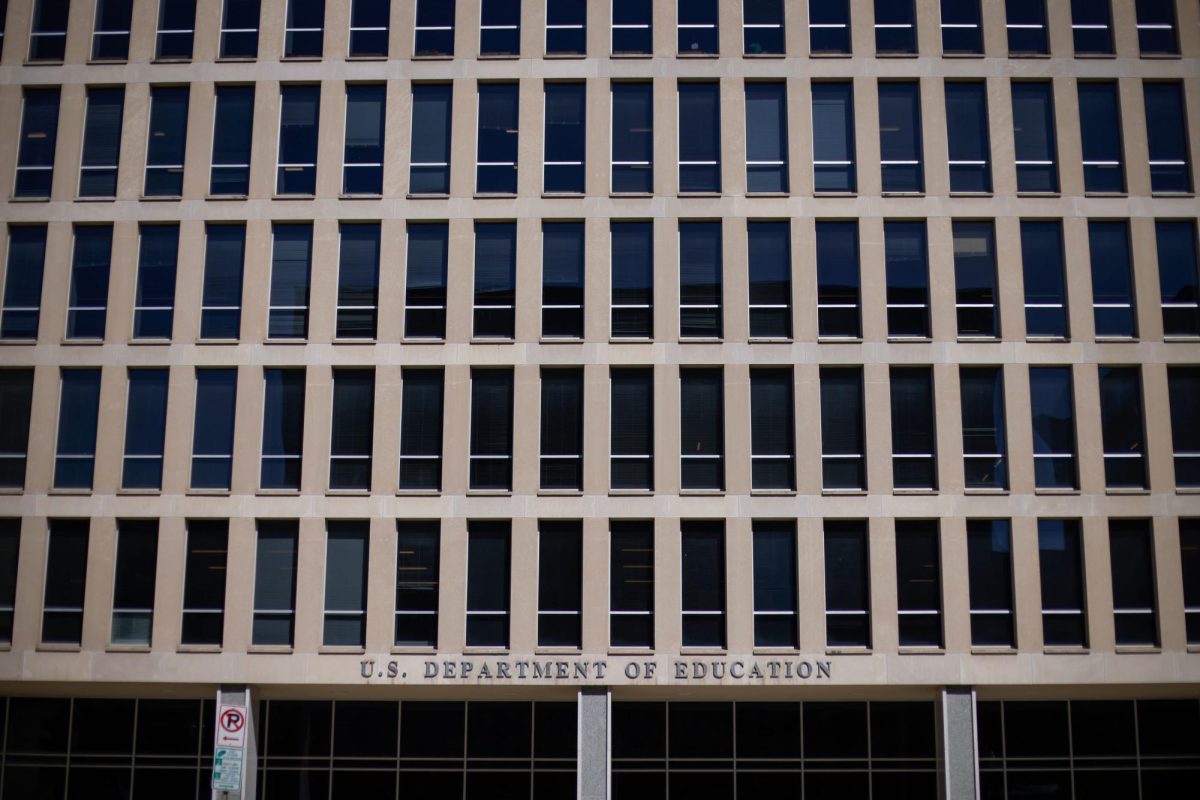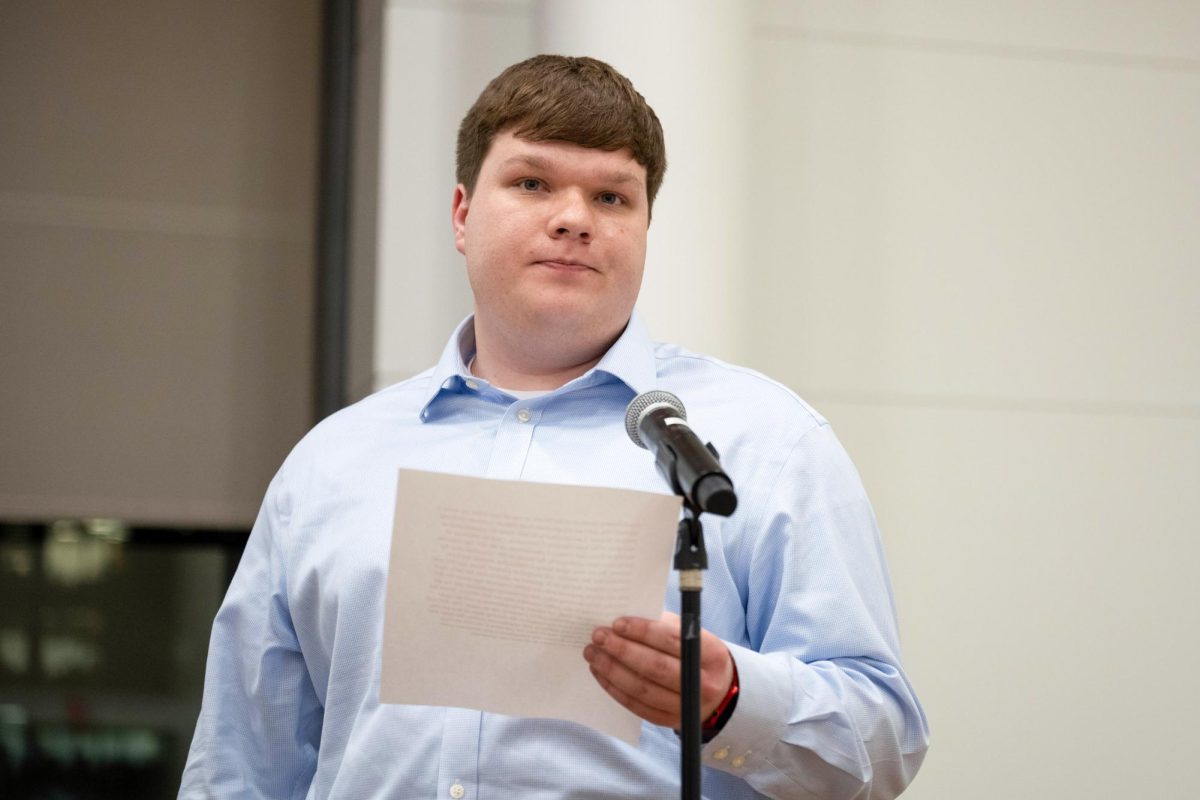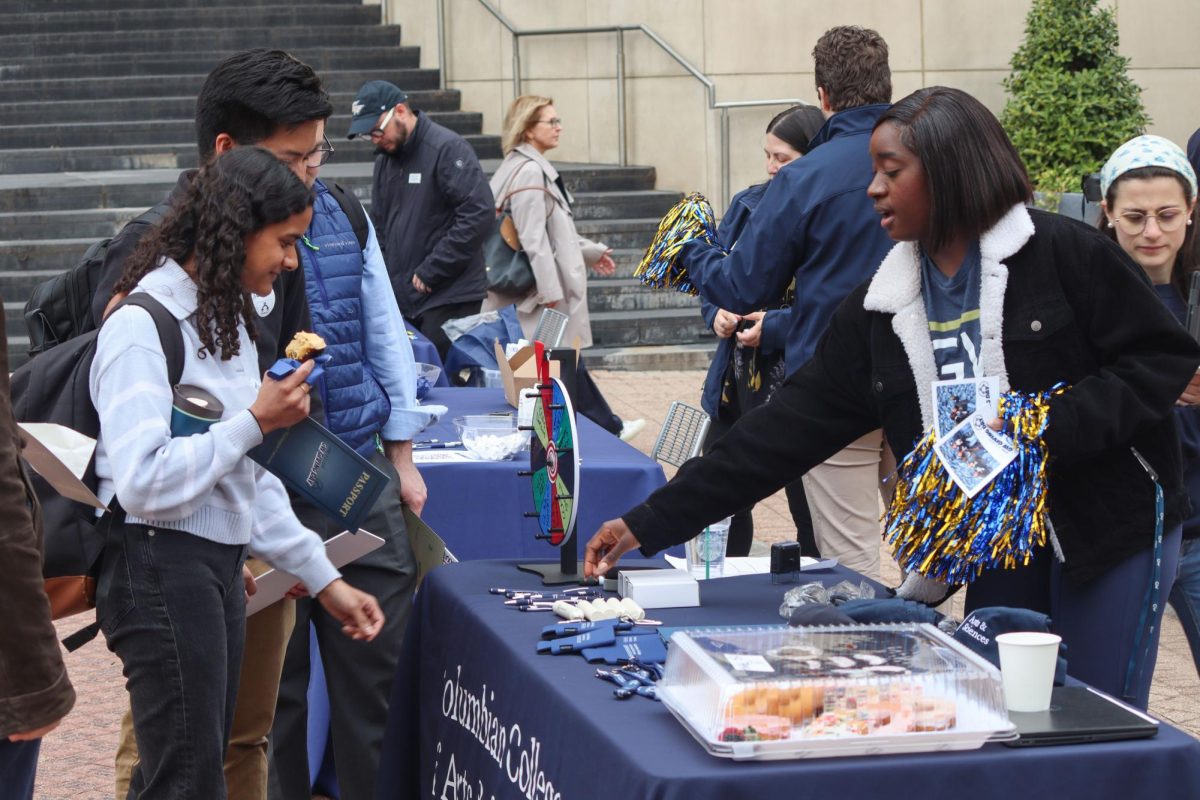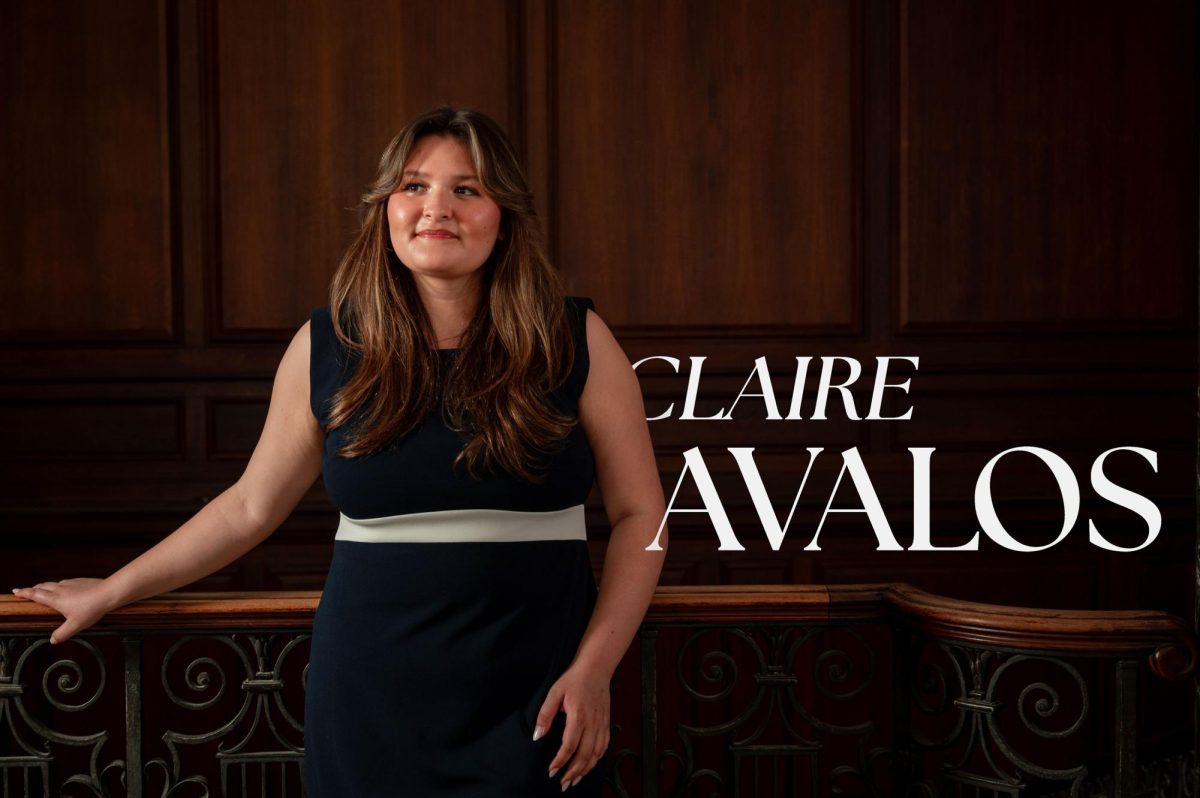A Stanford Law School professor discussed his new book about the Fourth Amendment and its application in the digital world on Wednesday.
Orin Kerr, an expert in criminal law and procedure at Stanford and former GW Law professor, spoke about his 2024 book “The Digital Fourth Amendment” and how technology has broadened the way courts view constitutional rights to privacy. The GW Center for Law and Technology hosted the event at the Law School’s Student Conference Center as part of its ongoing series of lectures by law experts.
Kerr said the Fourth Amendment’s protections, which guarantee citizens the right against unreasonable search and seizure of evidence and information, were written for a world before the digital age. He said the focus of his book and scholarly work over the last two decades has been exploring how digital technology has transformed criminal investigations and the seizure of evidence by law enforcement.
“The evidence that’s available in the digital world is different than the evidence available in the physical world and the way the evidence is collected is different than it is in the physical world,” Kerr said.
Kerr said before smartphones became common, courts had ruled that law enforcement was able to search everything found on a person they were arresting. He said the rule, called a “search incident to arrest,” allowed for police to discover more crimes inadvertently, like finding illegal drugs on a person they pulled over for speeding.
Kerr said in the 1990s, courts ruled information found on technology, like pagers, which he said at the time were commonly used by drug dealers to communicate with buyers, was legally equivalent to physical evidence in the eyes of the court. He said this allowed police to use phone numbers found on the devices to track down buyers without a warrant.
“Then people started carrying flip phones, and then the iPhone arrives in 2007, and all of a sudden people are not just carrying five phone numbers, they’re carrying an entire digital world around with them wherever they go,” Kerr said.
Kerr said the 2014 Supreme Court case, Riley v. California, “changes the nature” of digital searches when the court ruled police could not search a suspect’s cellphone without a warrant after an arrest. The unanimous ruling held that while police may conduct searches during an arrest for officers safety, the contents of cell phones cannot be searched automatically because digital data poses no immediate safety threat.
“It’s no longer just going through five phones that are stored on a pager. Instead, it is the equivalent of a search of a home, but the technology has made it such that it’s just locally stored,” Kerr said.
He said his book gives an overview of digital Fourth Amendment issues the courts are currently “grappling” with, like what digital data is considered constitutionally protected. He said the Fourth Amendment established a “pre-digital equilibrium,” a balanced understanding of what the law permits before the digital age, for what could be searched or seized as evidence in a physical world but that those rules now have a “dramatically” different effect in a digital context when it comes to things like digital warrants and searches.
“The methodology is basically to look for new rules that restore the role of the old doctrine in the old world for the new environment,” Kerr said. “So it’s adjusting to restore the equilibrium when the old rules of fact have sort of basically gone out of whack.”
Kerr said one of the biggest Fourth Amendment issues the courts currently face is the idea of a “digital search warrant,” or how authorities are limited in what they are allowed to search or collect when examining a device. He said in a traditional context, the Fourth Amendment allows the government to collect evidence of additional crimes when it is executing a search warrant on a fixed area, like a home or vehicle.
“The concern is, if the government gets evidence for a warrant to search for one thing, does that mean everything on the phone is just fair game? The entire digital world? Or are there some sort of principles that limit the scope of the search such that the government having probable cause for one offense doesn’t mean it’s just fair game?” Kerr said.
He said it doesn’t make sense for courts to limit the search by “file type” such as text messages, even though screenshots of those messages might also be stored on the suspect’s phone.
Kerr said many court cases that are considering the Fourth Amendment’s applicability to the digital world are still in progress and that the courts are still trying to figure this out.
He said different courts are issuing different interpretations of the law, which causes a split in views on the issue.
“Think through these issues in 20 years or 50 years or 100 years,” Kerr said. “Presumably, computers are not going away and so the issues, the answers the courts figure out today are important, and then in the future they’re everything.”


